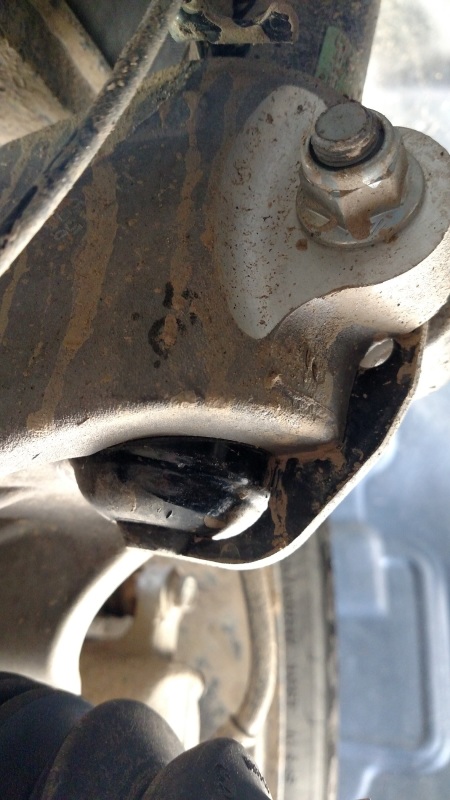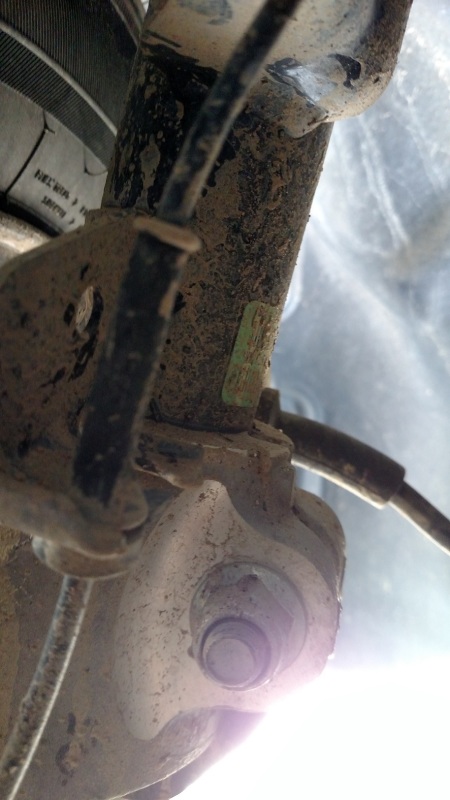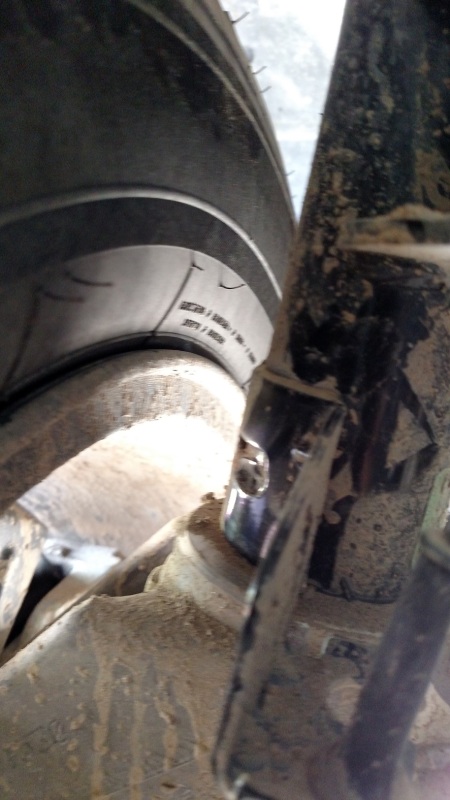Hello, I need some help from someone far more educated than I in determining if a brake line bracket spot welded to a strut serves as a stop mechanism to keep the knuckle from moving upwards the strut.
How this question surfaced is that someone has developed a way to lift the "un-liftable" 2014 + Jeep Cherokee
The lift is accomplished by moving the knuckle 3/4 of an inch further down the strut and also enlarging a second, existing hole (3/4 an inch down) to pass the bolt through. The concern is that since the knuckle no longer sits flush against the brake line bracket it will possibly move when placed under stress.
The knuckle seems to be held in place by clamping force alone bolt is torqued to - 100 LB-FT.
My questions:
1) Does the brake line bracket also function as a mechanism to prevent strut movement or is it just there to help align the knuckle/hold the brake line in place?
2) If the bracket also serves as a stop, will placing a steel ring in between the brake line bracket and the knuckle - post-lift - be enough to restore the function the bracket serves?
3) Any other safety issues to be concerned about?
I've uploaded two pictures of the brake line bracket and 1 of the strut/knuckle showing the smaller hole that needs to be enlarged.
Any advice/input will be greatly appreciated.



How this question surfaced is that someone has developed a way to lift the "un-liftable" 2014 + Jeep Cherokee
The lift is accomplished by moving the knuckle 3/4 of an inch further down the strut and also enlarging a second, existing hole (3/4 an inch down) to pass the bolt through. The concern is that since the knuckle no longer sits flush against the brake line bracket it will possibly move when placed under stress.
The knuckle seems to be held in place by clamping force alone bolt is torqued to - 100 LB-FT.
My questions:
1) Does the brake line bracket also function as a mechanism to prevent strut movement or is it just there to help align the knuckle/hold the brake line in place?
2) If the bracket also serves as a stop, will placing a steel ring in between the brake line bracket and the knuckle - post-lift - be enough to restore the function the bracket serves?
3) Any other safety issues to be concerned about?
I've uploaded two pictures of the brake line bracket and 1 of the strut/knuckle showing the smaller hole that needs to be enlarged.
Any advice/input will be greatly appreciated.



